- Aspect Ratio: 1.78:1
- Video Codec: AVC/MPEG-4
- Resolution: 1080i/60 (29.970Hz)
- Audio Codec: Japanese & English DTS-HD Master Audio 2.0 (48kHz/24-bit)
- Subtitles: English
- Subtitles Color: Yellow/White
- Region: A (Region-Locked)
- Rating: TV-14 (D)
- Discs: 2 (2 x Blu-ray)
- Digital Copies: N/A
- Run Time: 300 Mins.
- Studio: Sentai Filmworks
- Blu-ray Release Date: December 31, 2012
- List Price: $69.98
–
Overall
[Rating:4/5]
The Series
[Rating:5/5]
Video Quality
[Rating:4.5/5]
Audio Quality
[Rating:4/5]
Supplemental Materials
[Rating:2/5]
Click thumbnails for high-resolution 1920X1080p screen captures
(All TheaterByte screen captures are lightly compressed with lossy JPEG at 100% quality setting and are meant as a general representation of the content. They do not fully reveal the capabilities of the Blu-ray format)
–
The Series
[Rating:5/5]
I view so much anime these days that it really takes something special to break through the noise and clatter of the mundane and register as something wholly unique, inspiring, and innovative. Penguindrum (輪るピングドラム; Mawaru Pingudoramu) is one of those series. Difficult to define, the series refuses to be labelled. It can be sci-fi, fantasy, romance, psychological thriller – however you want to define it, the series reaches out and grabs you on multiple levels, like any true work of art should. It at first hooks you with its beautiful artwork – colorful animation, stellar character design, lavish backgrounds, and oddly generic animated crowds. What’s wrong with this picture? These “people” that are mere outlines, amorphous shapes that make up the world beyond the characters we are focused in on seem out of place. As we are drawn into the story, we realize we’ve been set up for a grander discussion about destiny, fate, and individualism.
At the heart of Penguindrum is the story of the Takakura siblings, sister Himari, and brothers Shoma, and Kanba. The youngest of the three, the fatally ill Himari suddenly dies on an outing to the aquarium, but is revived by a strange spirit residing in a penguin-shaped hat. She then summons the two brothers into her world and commands them to seek out a strange and elusive object, the penguindrum, in order to ensure there sister’s continued existence. Through their search for the penguindrum, Shoma and Kanba meet Oginome Ringo, a girl from a neighboring all-girl high school who they are sure has the penguindrum. They believe it to be the diary of destiny she is keeping, passed down to her from her dead sister. Shoma is then assigned to follow and stay with Ringo everywhere she goes, even as she stalks their homeroom teacher, Mr. Tabuki, the man she is certain she is destined to be with. The strange relationship with Ringo, Shoma, Tabuki, Kanba, and Himari, who eventually becomes friends with Ringo, leads to the uncovering of a strange circle of fate connecting them all.
The series often unfolds in a non-linear fashion that may be off-putting to some; there are plenty of flashbacks to scenes that setup moments and explain situations or even seemingly non-significant things. One of my favorite scenes is when we flashback to when Himari was younger and, not to spoil anything, but a connection between Himari and the neon subway slogan signs is explored.
This is a truly fascinating piece of anime that, I believe, given time, may come to be regarded as just as groundbreaking as a work like Ghost in the Shell was, maybe even more so.
Video Quality
[Rating:4.5/5]
Penguindrum comes with a 1080i/60 AVC/MPEG-4 encodement of its digital animation. Despite the interlaced format, the imagery looks rather solid, clean, and crisp. There are a few moments where some slight motion artifacts can be spotted and issues with color gradations can be seen. Overall, this one is strong and pleasing to watch.
Audio Quality
[Rating:4/5]
Audio is supplied in the original Japanese and an English dub, both in DTS-HD Master Audio 2.0 (48kHz/24-bit). For purists who enjoy watching anime with the original Japanese, I’m not sure what the advantage will be here, because like the majority of Sentai’s releases, the English subtitles basically mirror the English dub. I’d say “or vice versa”, but by the way the lips just seem to flap away at times when the English audio is engaged, I’m not so sure about that. Sentai’s subtitles also seem to be plagued with non-intentional (read: not slang or jargon) grammatical errors and typos, and this one seems to be one of the worst I have come across. So, take your pick, I still think the Japanese voice actors sound more comfortable in the roles than the English ones. As for the audio quality, it is sound (no pun intended), with minor variations here and there, such as a bit more reverberation on dialogue in a scene or two for the English track. The English track also seems to be mastered slightly louder, but has the dialogue mixed a little bit lower.
Supplemental Materials
[Rating:2/5]
There isn’t much on offer here at all, but the usually supplied clean opening and closing animations do at least allow you to get a better peek at the unusually cool opening and closing sequences for this wonderfully animated (and scored) series.
The supplements:
- Clean Opening Animation
- Clean Closing Animation
- Japanese Promos (1.78:1; 1080i/60; 00:02:07)
- Sentai Filmworks Trailers
- English Disc Credits
The Definitive Word
Overall:
[Rating:4/5]
When I hear people derisively refer to animation as “cartoons” or say they don’t like animation because it’s for children, I immediately think of works like this. There’s no kid stuff going on in Penguindrum. It’s a multilayered, philosophical discussion of life, love, the individual, the difference between fate and destiny – all set to beautifully rich and detailed artwork. Highly recommended.
Additional Screen Captures
[amazon-product]B009AVCADU[/amazon-product]
Purchase Penguindrum: 1 on Blu-ray at CD Universe
Shop for more Blu-ray titles at Amazon.com
–
[amazon-product]B009AVCADU[/amazon-product]
Purchase Penguindrum: 1 on Blu-ray at CD Universe
Shop for more Blu-ray titles at Amazon.com
Overall
[Rating:4/5]
The Series
[Rating:5/5]
Video Quality
[Rating:4.5/5]
Audio Quality
[Rating:4/5]
Supplemental Materials
[Rating:2/5]




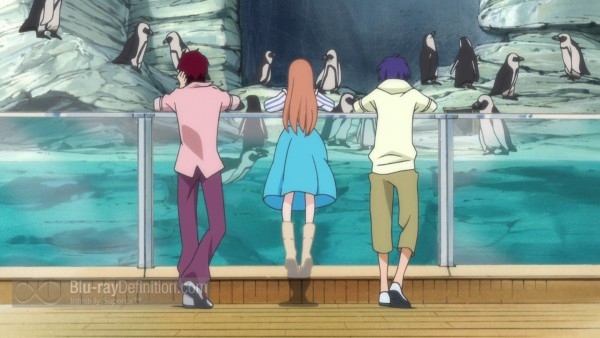
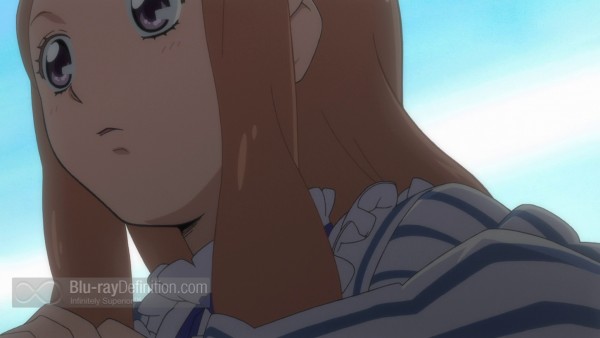
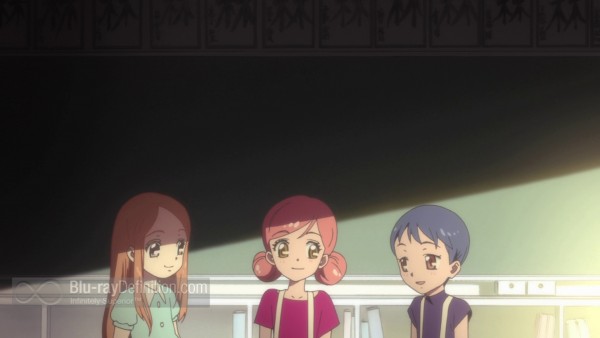
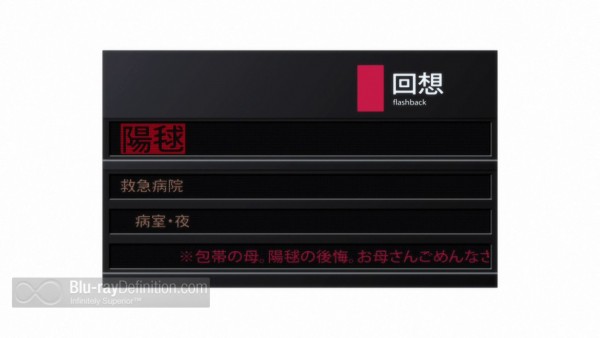
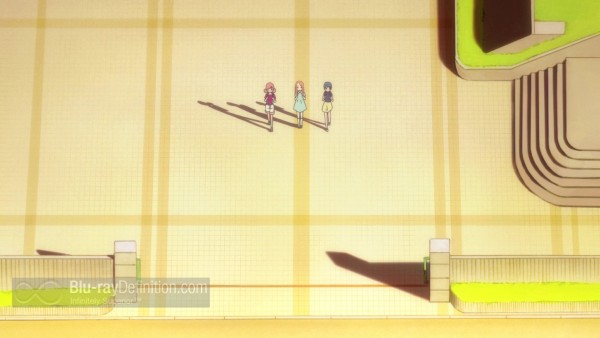
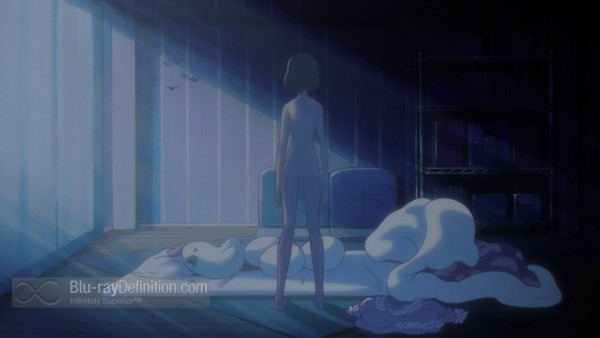
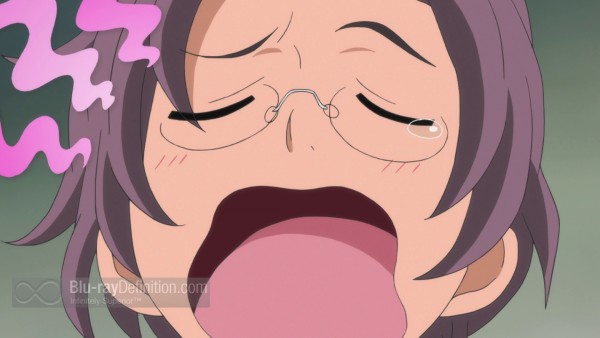
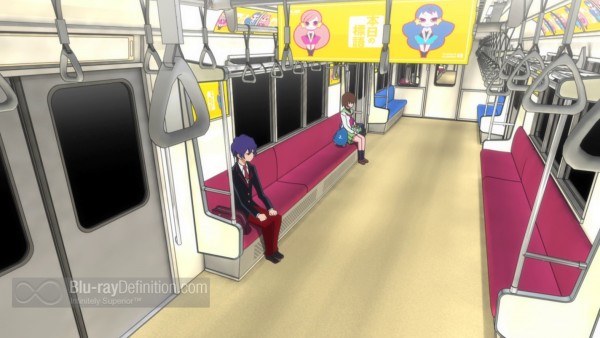
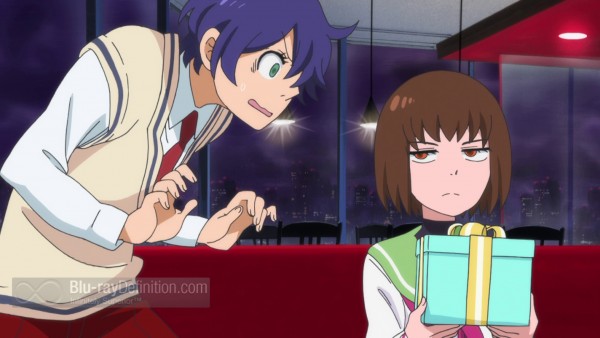
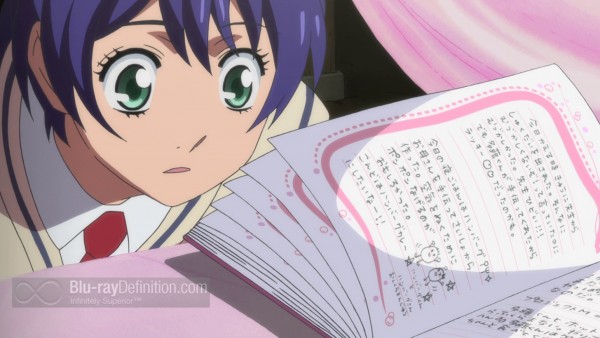
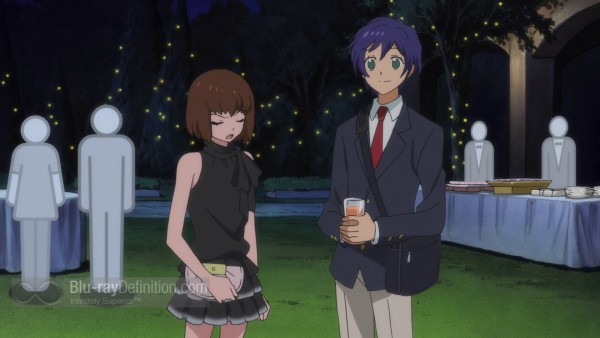

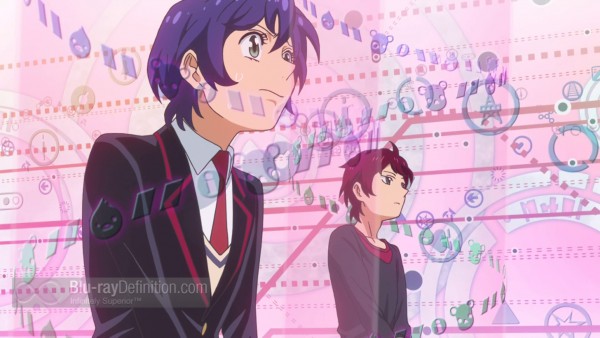
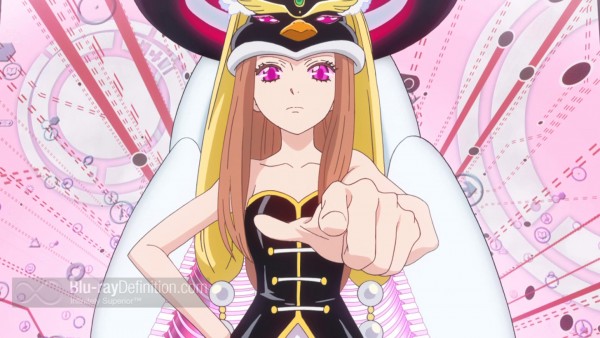
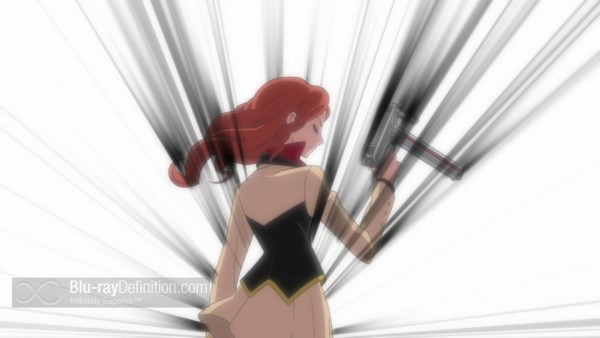
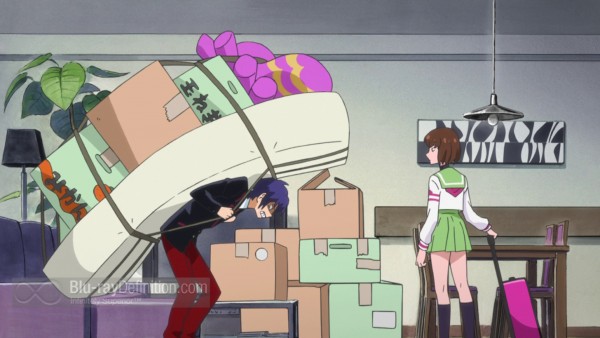
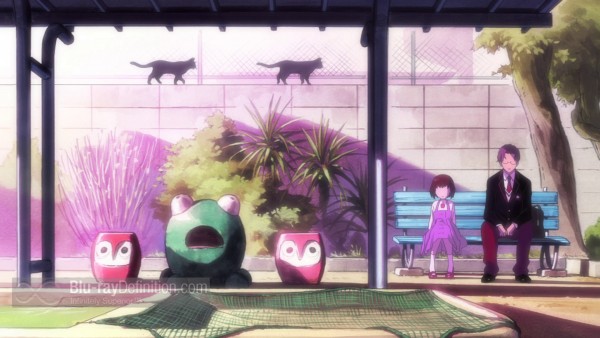
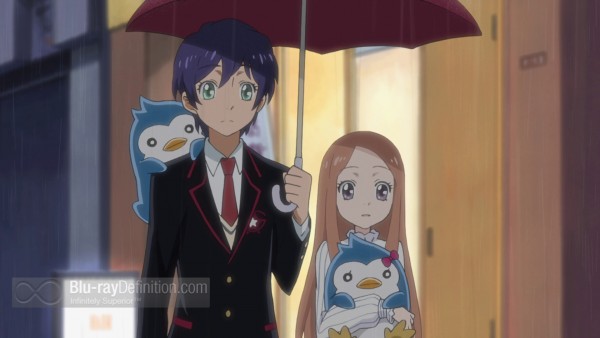
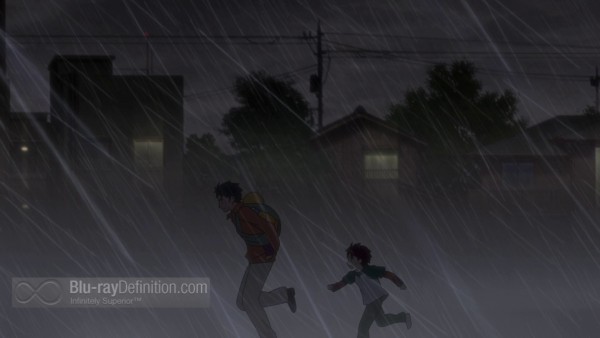

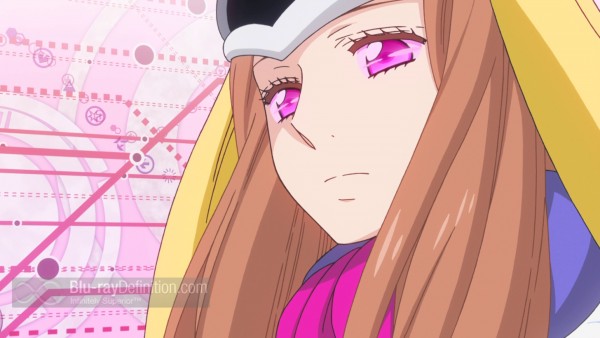
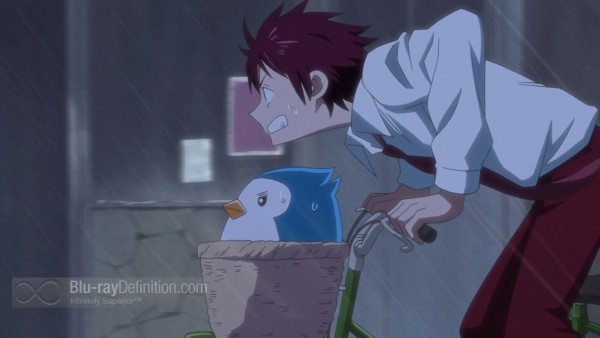
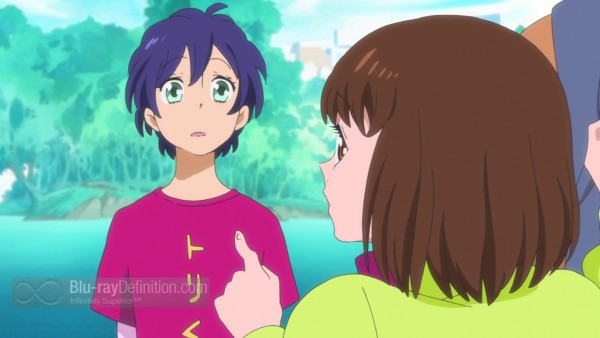
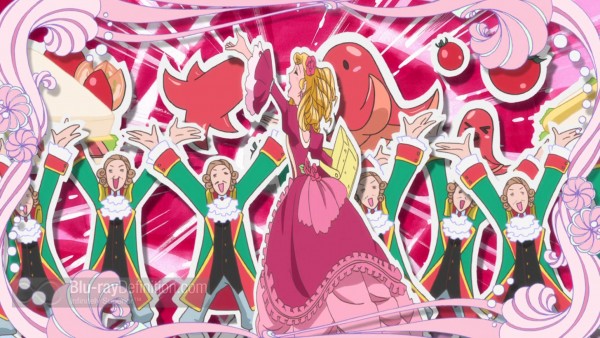


This is the first mention I’ve seen that says it’s 1080i, other reviews and forum posts from people that have gotten their copies say it’s 1080p. Are you sure 1080i is right?
The other reviews would be incorrect, unless I happen to have received one from a defective batch or something, which is unlikely. I double-checked it. It’s 1080i/60 (29.970Hz).
The thought occurred to me I should probably mention as well that the menu screen for the disc is 1080p/24 and the back of the package is labelled as 1080p, but the series itself is not. As I stated in my comment above and in the review, the series is 1080i/60.
Someone on a forum posted the disc info and you were right it’s 1080i. Some screenshots were posted on that other Blu-ray site’s review which show some pretty bad compression artifacts during the transformation sequences, they gave it a high video score and made no mention of the artifacts though. To be fair, they might have mistakenly thought it was a stylistic effect. Did you see these artifacts while watching? For comparison, top shots are US, bottom are from the Japanese BDs:
US 1: http://images2.static-bluray.com/reviews/7280_16_1080p.jpg
JP 1: http://acacallis.com/penguindrum/00001.mpls_snapshot_00.27.56.png
US 2: http://images3.static-bluray.com/reviews/7280_15_1080p.jpg
JP 2: http://acacallis.com/penguindrum/00001.mpls_snapshot_00.27.49.png
US 3: http://images.static-bluray.com/reviews/7280_13_1080p.jpg
JP 3: http://acacallis.com/penguindrum/00001.mpls_snapshot_00.28.53.png
The JP BDs are 1080p so there is no good reason for Sentai’s to be 1080i. I suspect either that they were given broadcast masters instead of the JP BD masters or they fudged the encode.
I just realized, embarrassingly, that I actually left off the additional screen caps at the end of this review, so I’ve just added them on. As far as image issues go, as I stated in my review “There are a few moments where some slight motion artifacts can be spotted and issues with color gradations can be seen.” I didn’t specifically notice anything as bad as in the images you linked to, but there are some issues you can spot in the screen caps here as well. The problem with 1080i is, it is combination of how good or bad your de-interlacer is and (where screen caps are concerned) where/when you grab the image. 1080p would be optimal, but this 1080i transfer looks pretty good; not flawless.